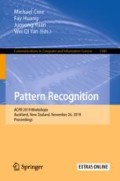Abstract
The ubiquitous availability of wearable sensors is responsible for driving the Internet-of-Things but is also making an impact on sport sciences and precision medicine. While human activity recognition from smartphone data or other types of inertial measurement units (IMU) has evolved to one of the most prominent daily life examples of machine learning, the underlying process of time-series feature engineering still seems to be time-consuming. This lengthy process inhibits the development of IMU-based machine learning applications in sport science and precision medicine. This contribution discusses a feature engineering workflow, which automates the extraction of time-series feature on based on the FRESH algorithm (FeatuRe Extraction based on Scalable Hypothesis tests) to identify statistically significant features from synchronized IMU sensors (IMeasureU Ltd., NZ). The feature engineering workflow has five main steps: time-series engineering, automated time-series feature extraction, optimized feature extraction, fitting of a specialized classifier, and deployment of optimized machine learning pipeline. The workflow is discussed for the case of a user-specific running-walking classification, and the generalization to a multi-user multi-activity classification is demonstrated.
Access this chapter
Tax calculation will be finalised at checkout
Purchases are for personal use only
References
Ahmadi, A., et al.: Toward automatic activity classification and movement assessment during a sports training session. IEEE Internet Things J. 2(1), 23–32 (2015)
Christ, M., Braun, N., Neuffer, J., Kempa-Liehr, A.W.: Time series FeatuRe extraction on basis of scalable hypothesis tests (tsfresh - a Python package). Neurocomputing 307, 72–77 (2018). https://doi.org/10.1016/j.neucom.2018.03.067
Christ, M., Kempa-Liehr, A.W., Feindt, M.: Distributed and parallel time series feature extraction for industrial big data applications. Learning (2016). https://arxiv.org/abs/1610.07717v1. Asian Conference on Machine Learning (ACML), Workshop on Learning on Big Data (WLBD)
Fulcher, B.D.: Feature-Based Time-Series Analysis, pp. 87–116. Taylor & Francis, Boca Raton (2018)
Fulcher, B.D., Jones, N.S.: hctsa: a computational framework for automated time-series phenotyping using massive feature extraction. Cell Syst. 5(5), 527–531.e3 (2017). https://doi.org/10.1016/j.cels.2017.10.001
Lara, O.D., Labrador, M.A.: A survey on human activity recognition using wearable sensors. IEEE Commun. Surv. Tutor. 15(3), 1192–1209 (2013)
Pedregosa, F., et al.: Scikit-learn: machine learning in Python. J. Mach. Learn. Res. 12, 2825–2830 (2011)
Wong, A., Vallabh, R.: IMeasureU BlueThunder sensor. Sensor Specification 1.5, Vicon IMeasureU Limited, Auckland (2018). https://imeasureu.com/wp-content/uploads/2018/05/Sensor_Specification_v1.5.pdf
Acknowledgement
The authors like to thank Julie Férard and the team at IMeasureU for their support.
Author information
Authors and Affiliations
Corresponding author
Editor information
Editors and Affiliations
Rights and permissions
Copyright information
© 2020 Springer Nature Singapore Pte Ltd.
About this paper
Cite this paper
Kempa-Liehr, A.W., Oram, J., Wong, A., Finch, M., Besier, T. (2020). Feature Engineering Workflow for Activity Recognition from Synchronized Inertial Measurement Units. In: Cree, M., Huang, F., Yuan, J., Yan, W. (eds) Pattern Recognition. ACPR 2019. Communications in Computer and Information Science, vol 1180. Springer, Singapore. https://doi.org/10.1007/978-981-15-3651-9_20
Download citation
DOI: https://doi.org/10.1007/978-981-15-3651-9_20
Published:
Publisher Name: Springer, Singapore
Print ISBN: 978-981-15-3650-2
Online ISBN: 978-981-15-3651-9
eBook Packages: Computer ScienceComputer Science (R0)

